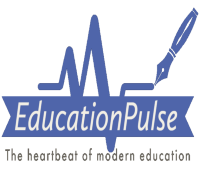“Anyone… anyone…?” (Ferris Bueller’s Day Off)
The classroom is changing, evolving and developing in our understanding, curriculum standards, and expectations of both students and teachers. As we move forward, our focus, expectations and understanding of what a classroom should look like, how it should function and how we teach and learn has begun to change with it. We’ve gone from paper-based instruction and testing to completely digital in the matter of 3 years. We’ve changed learning management systems, we’ve changed standards, and we’ve changed block length and structure. With such rapid change, perhaps it is time to change how we structure our classes as well.Student-Centered Learning
Lectures have been a staple of our instruction for decades. We have all done it. Teacher, standing at the front of the room presenting information, hoping that our students understand either with guided questions, guided notes, or simply through osmosis. Students, falling asleep, doodling, or not paying attention in the slightest. Maybe the choice few are engaged, but I would wager that more often than not, lectures miss about half of our students in the classroom. The use of lectures as the sole means of content instruction is ineffective at best. While on paper it might seem that it is the fastest way to get the most content across, the number of students engaging with the content in a meaningful way is reduced, thus limiting the actual information being conveyed. “Well what do we do?” Great question! Moving toward student inquiry and content-driven curriculum will provide the most agency for students, as well as higher levels of content understanding and student engagement. Here are a few ideas on activities and lesson-structures to help boost understanding:- Jigsaw: Assigning students to be the, “Resident Experts” on a subject, asking them to compile information and prepare to share it with their class. To complete this activity, you need a few subjects or figures that will be researched. Provide students with a few guided questions to focus on, as well as some resources to guide their research. Tell them they will present in 20 – 25 minutes, and check in with them for their understanding. It’s a great way to engage everyone, and share the responsibility of learning and instruction.
- KWL Charts: Have students create a 3 column chart, outlining what they know about a given topic, what they want to know about said topic, and finally at a later time, either that block or at a later date, write what they learned about that topic. Listen to students interests. Adjust your instruction to what they want to know. This all gives the students a voice in what they learn, rather than just being along for the ride.

